From June 22 to January 9, 2022, the Reggia di Venaria Reale is hosting the exhibition Una infinita bellezza. Landscape in Italy from Romantic Painting to Contemporary Art, entirely dedicated to the theme of nature conservation and environmental sustainability. Set up in the spaces of the Juvarra Citroniera, the exhibition brings together more than two hundred works, mostly paintings, but also sculptures and installations, documenting the attention and love that so many artists have had for the natural environment and specifically for the landscape in Italy, from early Romanticism to contemporary art. The exhibition was created thanks to an agreement between the Consorzio delle Residenze Reali Sabaude and the Fondazione Torino Musei, under which more than 90 works from the GAM - Galleria Civica dArte Moderna e Contemporanea di Torino become the core of an exhibition that also brings together masterpieces from the most important Italian museums and prestigious private collections, in a tour of Italy of loans with paintings arriving from institutions such as the Musei Reali and the Pinacoteca dellAccademia Albertina in Turin, the Castello di Rivoli Museo dArte Contemporanea the Museo del Paesaggio of Verbania, the Galleria dArte Moderna of Milan, the Musei Civici of Brescia, the Galleria dArte Moderna e Contemporanea of Bergamo, the MART Museo dArte Moderna e Contemporanea of Trento and Rovereto, the Fondazione Musei Civici of Venice, the Intesa Sanpaolo Collection, the Galleria dArte Moderna in Genoa, the Uffizi Galleries, the Fondazione Longhi in Florence, the Galleria d’Arte Moderna in Palazzo Pitti, the GNAM Galleria Nazionale dArte Moderna e Contemporanea in Rome, the Museo di Capodimonte in Naples, and the Galleria dArte Moderna in Palermo.
The itinerary follows a chronological-geographical thread that interweaves space and time, with particular attention to the Piedmontese context and in general to the entire North of our Peninsula, without neglecting the important regional schools of Central and Southern Italy, from the late 18th century to the present. The twelve sections of the exhibition thus present the different forms that the representation of Landscape in Italy has taken over more than two centuries of painting.
Realized with the support of the Soprintendenza Archeologia Belle Arti e Paesaggio for the Metropolitan City of Turin, the exhibition is curated by Guido Curto (Director of the Reggia di Venaria and the Consortium of Royal Savoy Residences), Riccardo Passoni (Director of GAM) and Virginia Bertone (Chief Curator of GAM), with the collaboration of Alessandro Botta. The curators are joined by a scientific committee consisting of Professors Barbara Cinelli (University of Roma Tre), Piergiorgio Dragone (University of Turin), Flavio Fergonzi (Scuola Normale Superiore di Pisa) and Laura Iamurri (University of Roma Tre). In parallel with the exhibition, GAM starting July 9 will set up, in the Wunderkammer space, Nature and Truth. Il paesaggio come scelta 1864-1871 (Landscape as a choice 1864-1871 ), which, in close dialogue with the itinerary proposed at the Venaria, focuses on the most daring research conducted on the landscape front between Piedmont and Liguria, the so-called Scuola dellAvvenire of which Antonio Fontanesi is a protagonist. Next to him is the group of the Rivara cenacle: from Carlo Pittara to Federigo Pastoris, from Ernesto Bertea to Enesto Rayper, to finally focus on Alfredo De Andrade.
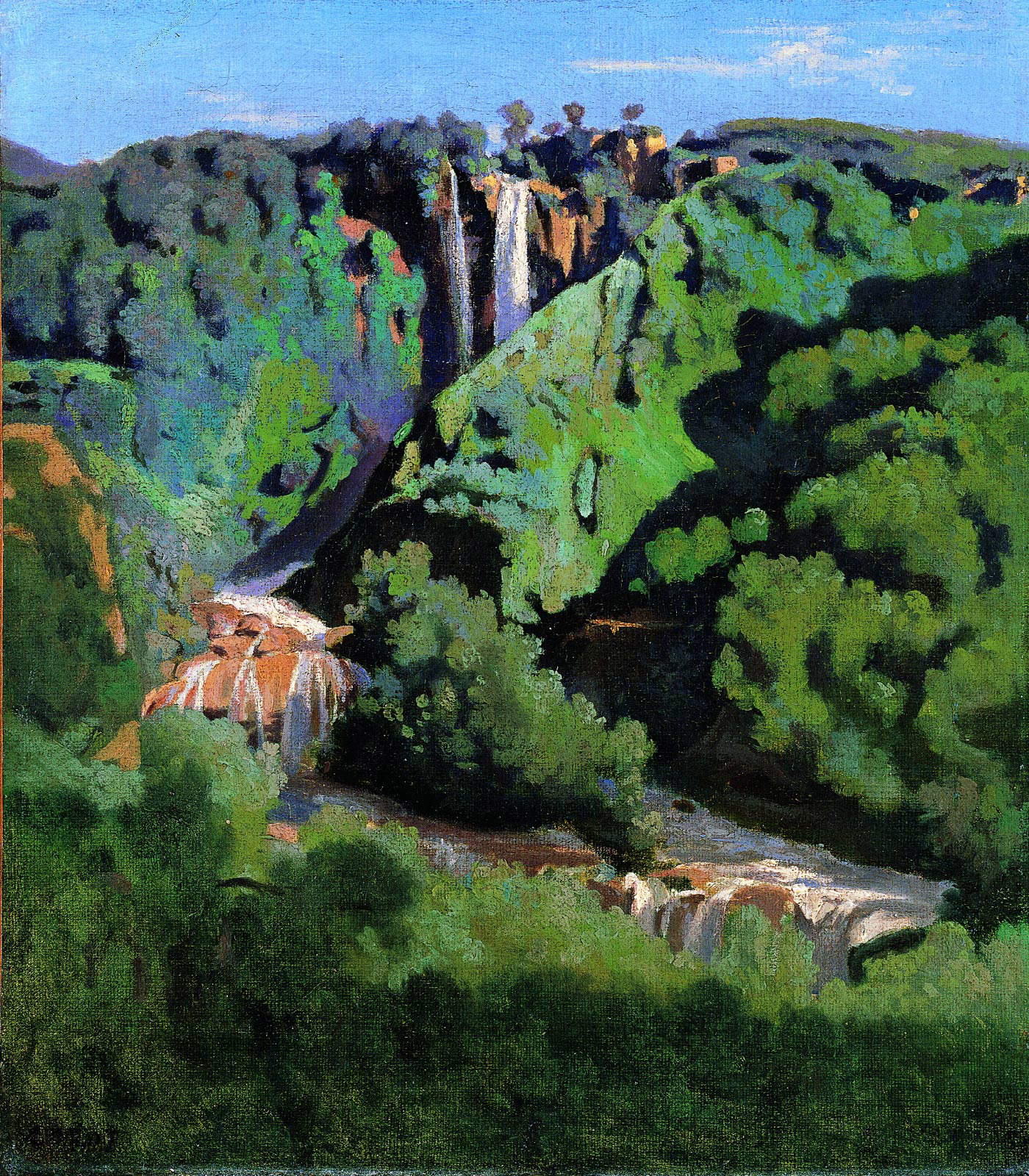 |
| Jean-Baptiste Camille Corot, The Marmore Falls in Terni (18261828; oil on canvas; Rome, BNL Gruppo BNP Paribas Collection) |
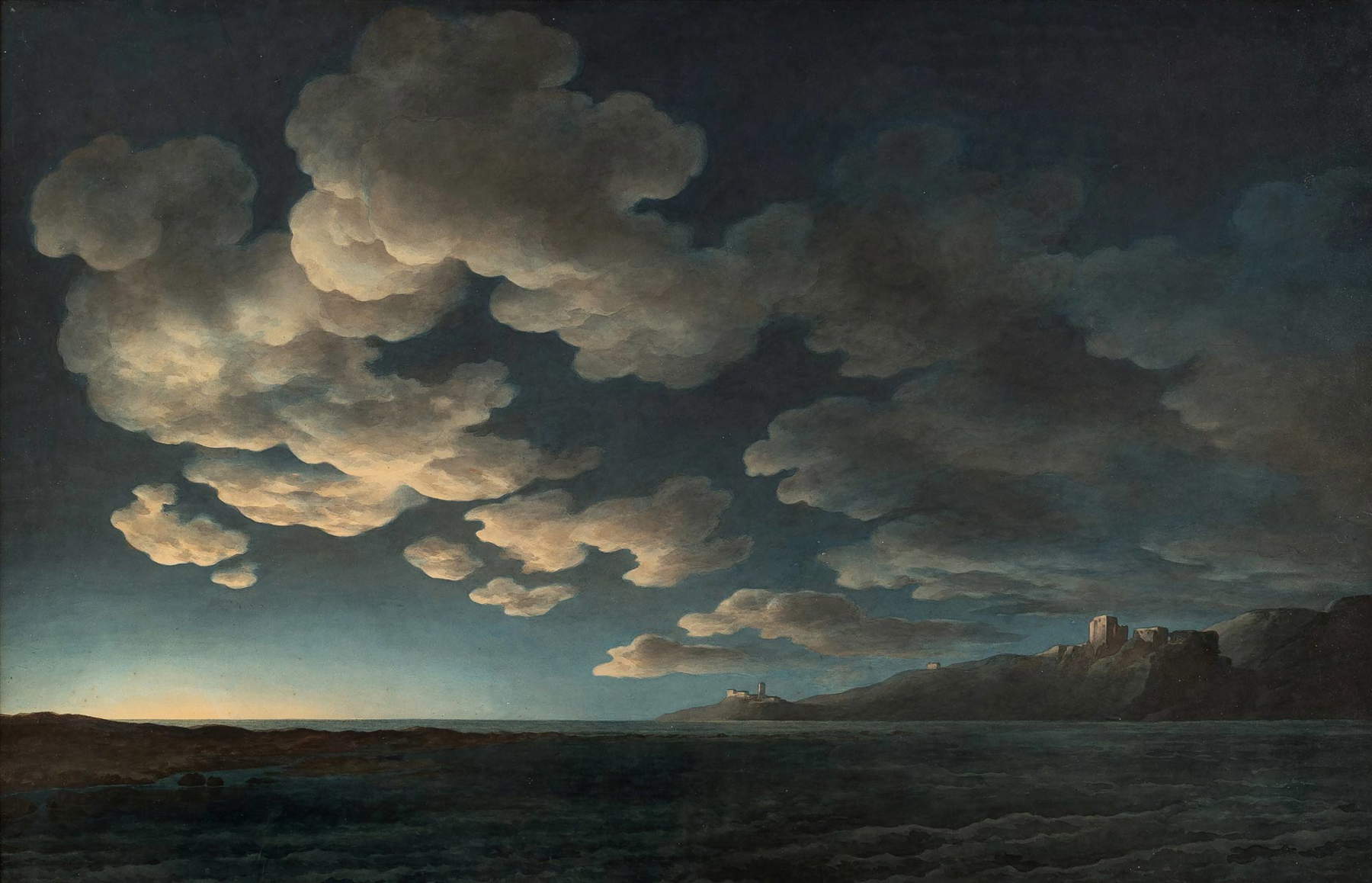 |
| Giuseppe Pietro Bagetti, Mare allo spunare dell’aurora (1820-1830; tempera on paper applied to cardboard; Turin, Musei Reali - Palazzo Reale) |
 |
| Antonio Fontanesi, The Stillness (1860; oil on canvas; Turin, GAM Galleria Civica dArte Moderna e Contemporanea) |
Twelve sections make up the Turin exhibition. It starts from the eighteenth century: considered within academic training with a mere gregarious function in the hierarchy of pictorial genres, from the end of the eighteenth century landscape takes on the status of an autonomous subject. A change to which many factors contribute, linked above all to the stimuli that artists derive from the aesthetic, philosophical and literary reflection of the early Romanticism: from these solicitations arises the desire to explore solutions other than those dictated by the canons of order and grace that governed the Winckelmannian Ideal Beauty. Starting the path is the nucleus of temperas and watercolors by Giuseppe Pietro Bagetti and Giovanni Battista De Gubernatis, in which the early attraction for the transient and unstable aspects of nature, which anticipates Romantic sensibility, coexists with views with optical precision, mindful of the topographical tradition. An aspect that characterizes the first decades of the nineteenth century is the need strongly felt by northern European artists to complete their training in Italy following the tradition of the Grand Tour, in order to perfect painting from life: exemplary in this sense is Jean-Baptiste Camille Corot’s painting of the Marmore Falls, the French artist’s only work in an Italian public collection. We then move on to the landscape cues that Massimo DAzeglio, Luigi Basiletti and the artists of the Posillipo School, from Anton van Pitloo to Giacinto Gigante, drew in the countryside and on the coasts between Rome and Naples in search of the dazzling Mediterranean light.
One chapter is devoted to the novelty of historiated landscapes with elements taken from history and literature, which triumphed in the Romantic Milan of DAzeglio and Giuseppe Bisi. Another section considers the large-scale landscapes purchased and donated for the collection of the newly established in 1863 Museo Civico di Torino, in which the works of Carlo Pittara, Giuseppe Camino, Corsi di Bosnasco, and Achille Vertunni excel. The many artists and schools of the second half of the 19th century are also read through the filter of the outcomes that confronted each other in the great National Exhibitions, beginning with the first held in Florence in 1861: from the poetic visions of Antonio Fontanesi to those of Nino Costa, from the search for truth present in the small canvases of the Macchiaioli, in which the landscape is rendered with verist immediacy through light and patches of color, to the School of Rivara and the Gray School of Rayper and dAndrade. Thus from the experiences that privilege fidelity to nature we come to the new Divisionist and Symbolist sensibilities through the works of Angelo Morbelli and Pellizza da Volpedo to the most famous Gaetano Previati, Pietro Fragiacomo and Giovanni Segantini, in which the landscape is interpreted with poetic and lyrical assumptions with strong allegorical and evocative contents.
The twentieth century opens with a section that brings together works of Secessionist, Symbolist and Post-Impressionist culture-the Galleria Civica di Torino continued, in fact, to collect elegant and refined works on the theme of landscape with artists such as Luigi Onetti, Giuseppe Bozzalla and Giovanni Depetris. What emerges, then, is a line, if not of continuity, of still current interest in landscape liconography, with a few exceptions, for example in the Futurist sphere, considering that this davantgarde movement fought against landscape and the old aesthetic. In the exhibition the artist who emerges most clearly in this respect is Giacomo Balla, with both pre-Futurist and Futurist works. Finally, one could not elude the presence of Giorgio de Chirico with a pre-conceptual, even more than metaphysical, masterpiece of painting within painting. Very rich is the section of painting between the two world wars. The strongest presences are those of Carlo Carrà (with his neo-antique, even pre-Renaissance vision, after the Futurist and Metaphysical seasons), Giorgio Morandi, with his decanted landscapes, and Filippo de Pisis, standard-bearer of a freedom of painting without conditioning.
Some attention to the landscape is also present in the great Turin painter Felice Casorati, and to landscape representation are devoted, in many quality works, the Turin Six: from Gigi Chessa to Enrico Paulucci. On the national level, alongside Carrà, Arturo Tosi and Pio Semeghini were moving in the same groove. In the Italian postwar years, it is surprising to verify how the theme of landscape involved even the major informal artists, with intense, physical and even material results: from Renato Birolli, to Ennio Morlotti, Alfredo Chighine, up to Luigi Spazzapan. There is no shortage of iconographic restitutions of the theme even in the sphere of Italian Pop Art, though devoted to scrutinizing signs and symbols of modern life, through Mario Schifano and Piero Gilardi’s artificial nature. The itinerary concludes with contemporary art dialoguing with the environment and landscape, as emblematically happens in the Gardens of the Reggia with GiuseppePenone’s Fluid Sculptures, Giovanni Anselmo’s conceptual installation and Luigi Stoisa’s bronze sculpture Gea. While inside the Juvarra Citroniera the public will discover the sculptures of Luigi Mainolfi, Ezio Gribaudo, Luisa Valentini, Jessica Carroll, Maura Banfo, Luca Pancrazzi, Elisa Sighicelli’s photographs on silk and Stefano Arienti’s decollage, Grazia Toderi’s large video installation Orbite Rosse, the paintings by Francesco Casorati, Francesco Tabusso, Nicola De Maria, Mimmo Paladino, Salvo, Giovanni Frangi, Riccardo Taiana, Luisa Rabbia, Laura Pugno, Paolo Leonardo, Daniele Galliano, Pierluigi Pusole, Andrea Massaioli, Velasco Vitali, and the photoinstallations dedicated to the non-places of the industrial suburbs by Botto & Bruno. The latter section includes a number of works created especially for the exhibition on the theme of the landscape surrounding the Reggia di Venaria by Ugo Nespoloe Giorgio Ramella, with a final tribute to Monviso, an emblematic Piedmontese mountain, from whose foothills the Po River originates, which is celebrated with a singular collection of paintings made by many varied painters of the 19th and 20th centuries brought together by Salvo’s wife.
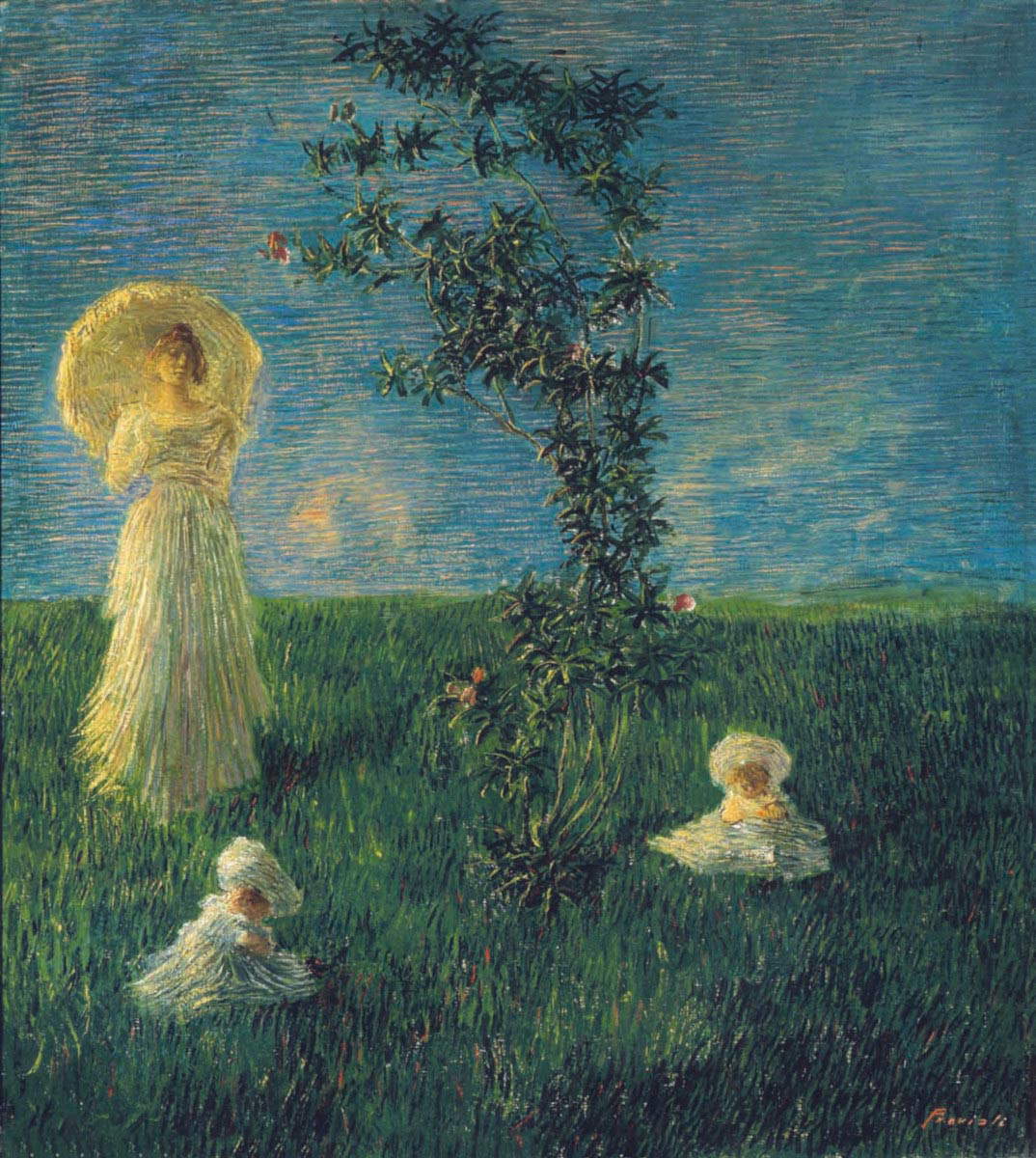 |
| Gaetano Previati, Nel prato (The Morning) (18891890; oil on canvas; Florence, Uffizi Galleries, Palazzo Pitti Gallery of Modern Art) |
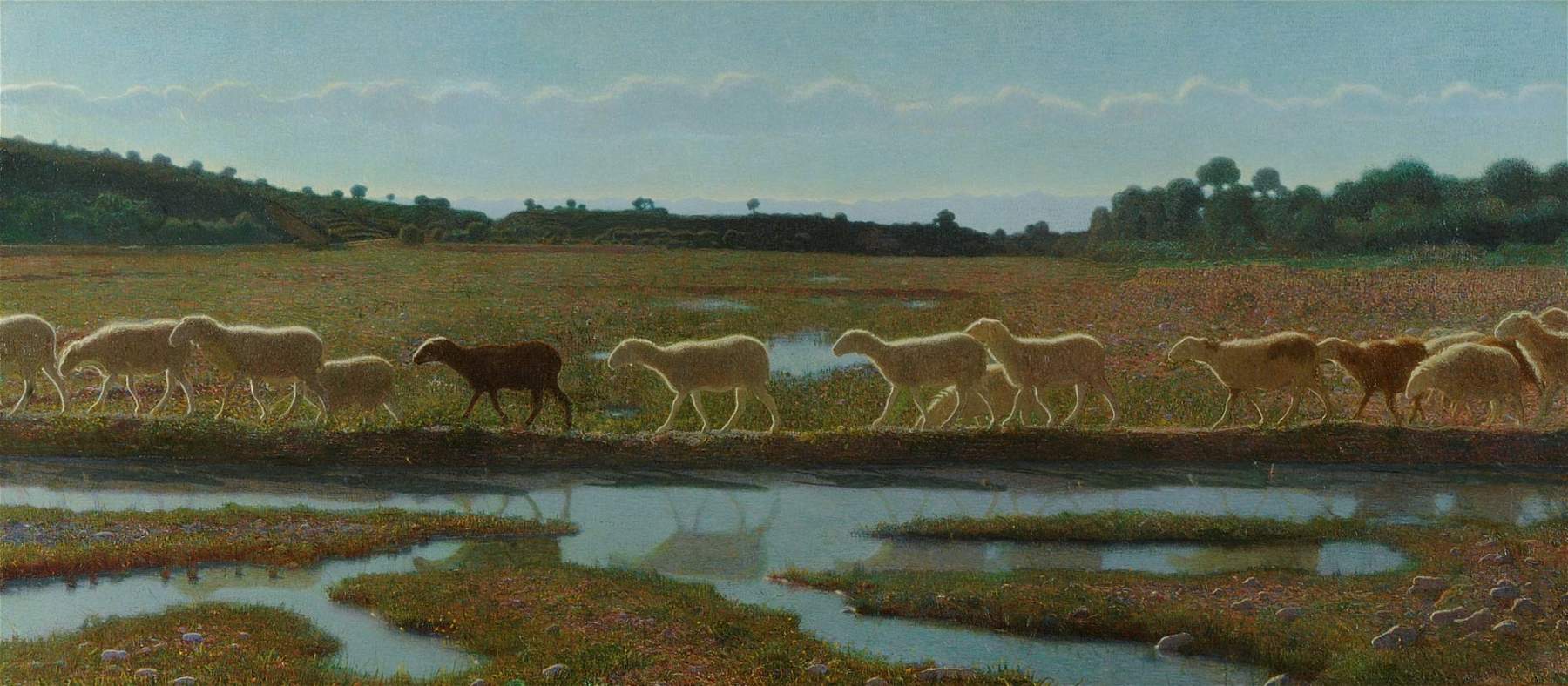 |
| Giuseppe Pellizza da Volpedo, Lo specchio della vita (E ciò che fa una, e l’altre fanno) (18951898; oil on canvas Turin, GAM Galleria Civica dArte Moderna e Contemporanea) |
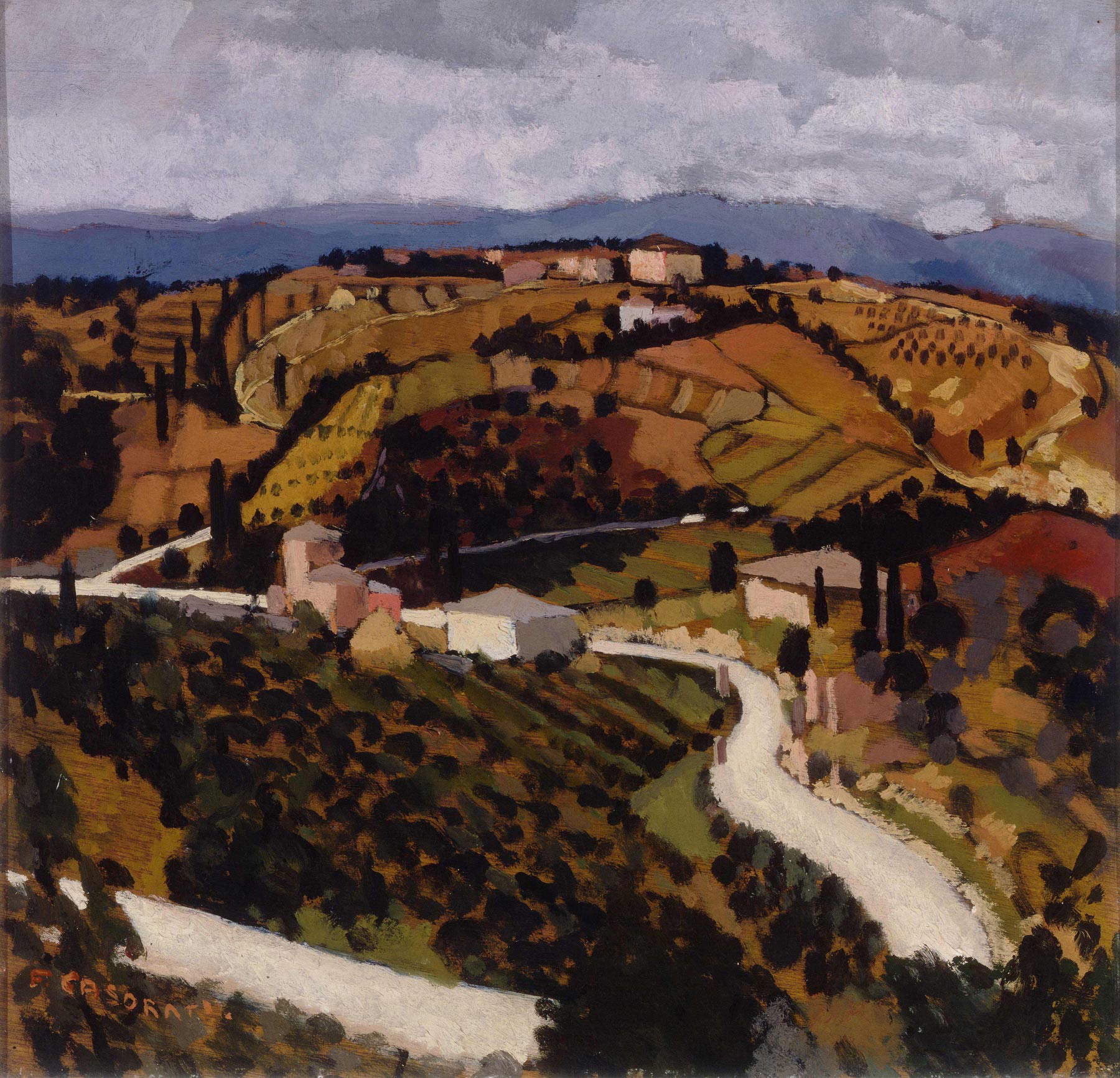 |
| Felice Casorati, Tuscan Landscape (1929; oil on wood; Turin, GAM Galleria Civica dArte Moderna e Contemporanea) |
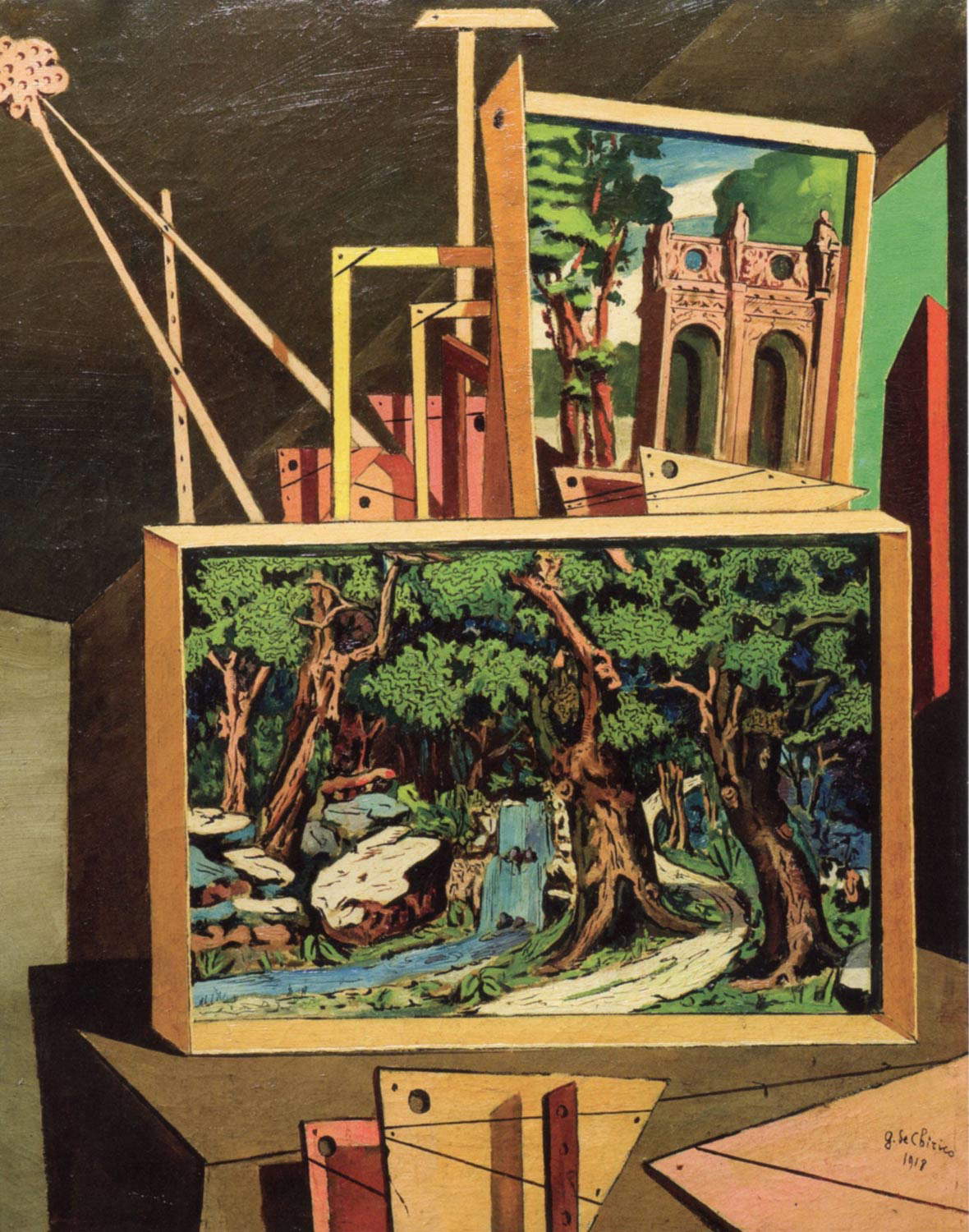 |
| Giorgio de Chirico, Metaphysical Interior (with trees and waterfall) (1918; oil on canvas; Turin, Caterina Bottari Lattes) |
Tickets: full 14 euros, reduced 10 euros (for groups of minimum 6 and maximum 12 people), reduced children 5 euros (for under 21 and university under 26), reduced schools 4 euros (classes of minimum 6 and maximum 12 students, one free for every 12 students), free for children under six, carers of the disabled, holders of Abbonamento Musei Torino Piemonte, Torino+Piemonte Card, Cultural Passport, various conventions. For all information you can visit the Venaria Reale website.
 |
| From Pellizza to De Chirico, major exhibition on landscape from the 18th century to the present at Venaria Reale |
Warning: the translation into English of the original Italian article was created using automatic tools. We undertake to review all articles, but we do not guarantee the total absence of inaccuracies in the translation due to the program. You can find the original by clicking on the ITA button. If you find any mistake,please contact us.